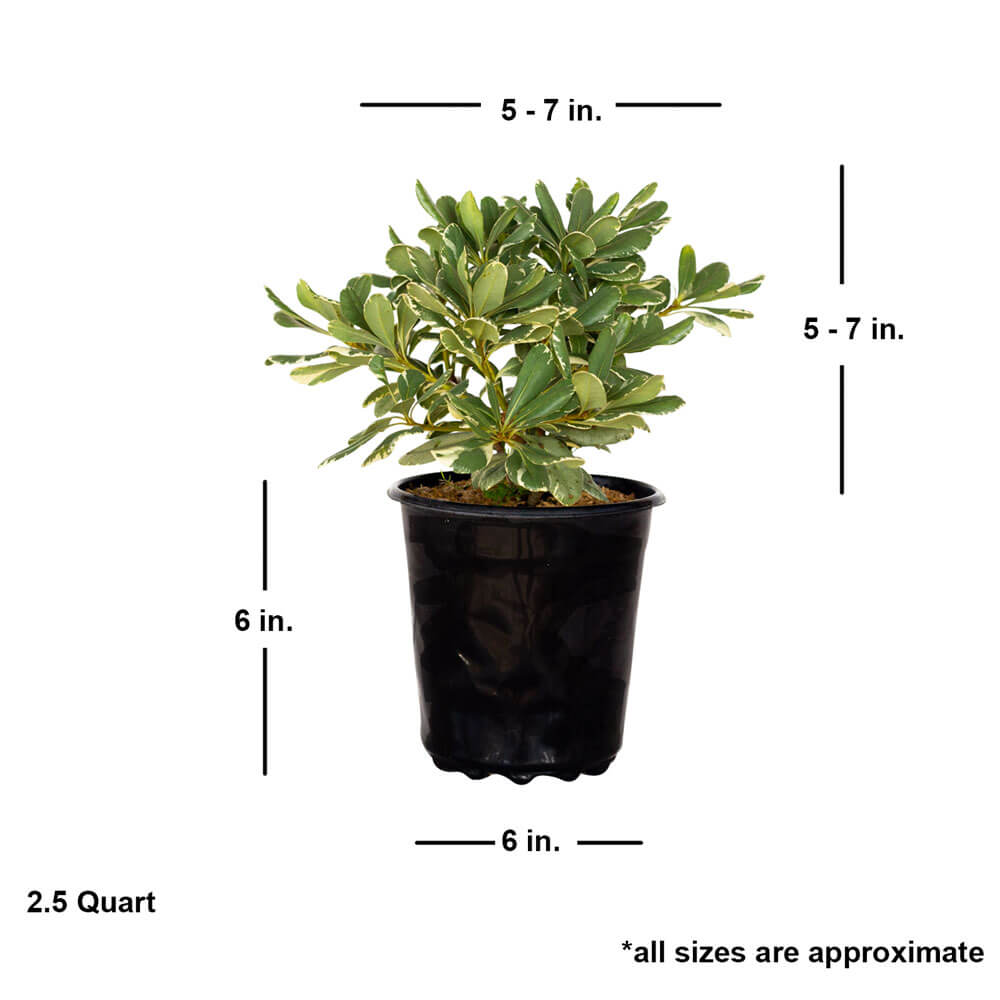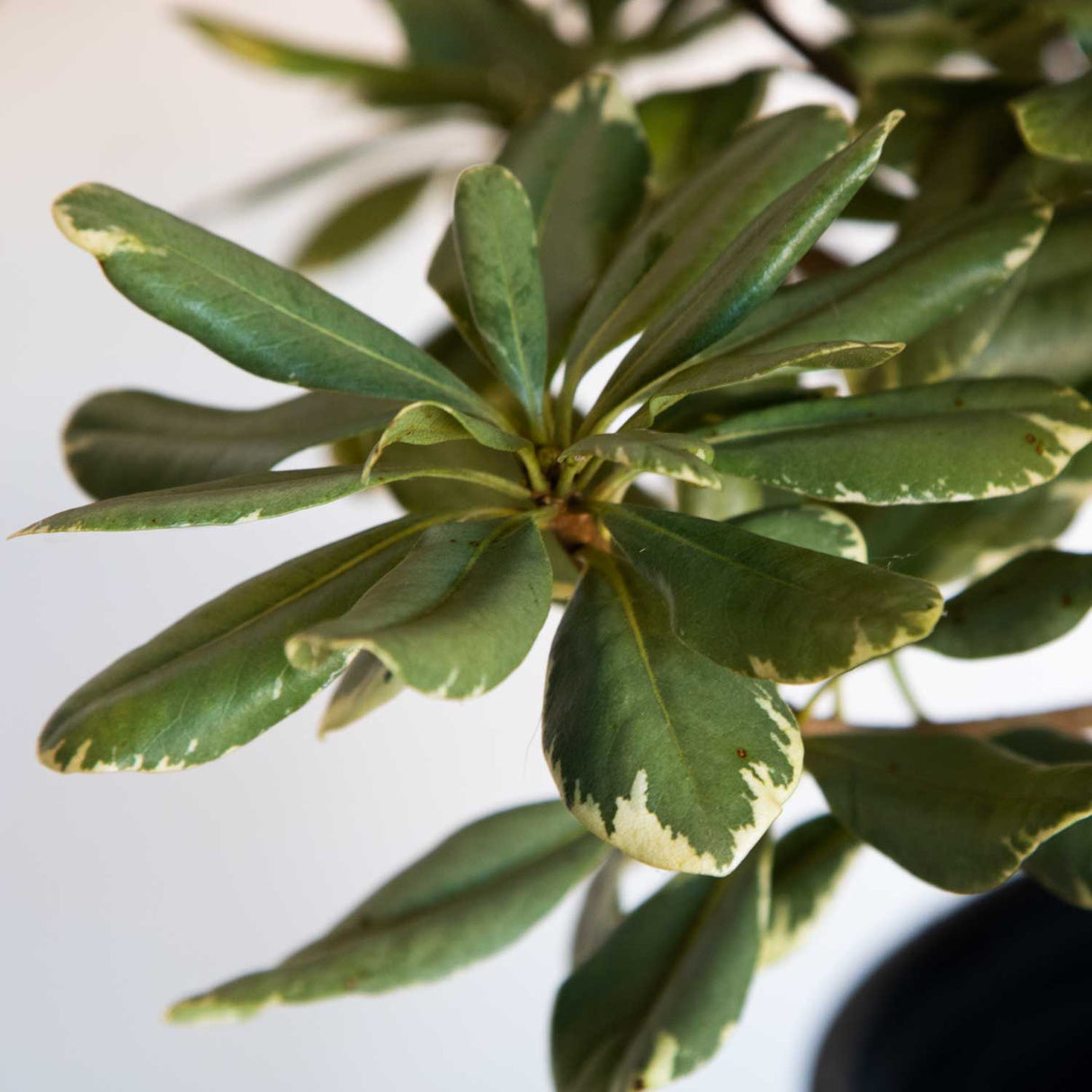Variegated Pittosporum (Variegated Japanese Mock Orange)
Variegated Pittosporum (Variegated Japanese Mock Orange) - 2.5 Quart is backordered and will ship as soon as it is back in stock.
Couldn't load pickup availability
Description
Description
Whether you call it a Pittosporum, Mock Orange, or Cheesewood, Variegated Pittosporum is something a little different for your landscape. This variety features olive green foliage with eye-catching white edges. Furthermore, these leaves are glossy and rounded on the end, which provides some soft texture to your landscape.
Besides its evergreen foliage, the Variegated Japanese Mock Orange brings fantastically fragrant flowers to the table as well. Petite white blossoms emerge every spring. But don't let their small size fool you, these blooms pack a real punch of orange-blossom fragrance.
This shrub reaches a maximum size of 6-8' H and 6-8' W. However, feel free to trim it to the desired size.
This is a moderate grower and will grow between 13-24" a year in favorable conditions.
Use this Mock Orange as a hedge, privacy screen, mass planting, or even in Asian-inspired gardens.
This variety is ideal for coastal plantings due to its impressive salt tolerance. In addition, its notably tolerant of urban pollution.
Once established, this plant is water-wise and easy to care for.
Check out the Mojo Pittosporum for a dwarf version of the Variegated Pittosporum. Alternatively, for coastal plantings, try it with the Light Show Bottlebrush, Shoal Creek Chaste Tree, and the Evergreen Stella Daylily.
Variegated Pittosporum Care
Hardy in USDA Zones 8-11, down to 10° when fully established.
Prefers Full Sun to Part Shade for best results. In full sun, this variety grows larger and more open. Meanwhile, in the partial shade, it tends to be smaller and more compact.
Water 2-3 times per week during the first growing season to encourage deep root production. During the second season, water 1-2 times per week. Afterward, water weekly in times of extreme drought and heat.
Grows well in average-quality soil as long as it has good drainage.
Fertilize every few months with a balanced slow-release fertilizer starting in spring to keep this selection growing and thriving.
Care & Use
Care & Use
Spacing Recommendations
Spacing Recommendations
-
Scientific Name
-
Hardiness Zone8, 9, 10, 11
-
Sun ExposureFull Sun to Part Shade
-
Evergreen or DeciduousEvergreen
-
FeaturesFast Growth, Flowering, Variegated
-
Feature ColorGreen
-
UsesBorder, Coastal, Foundation Planting, Hedge, Mass Planting, Privacy Planting
-
Water NeedsMedium
-
Bloom SeasonSpring
Growing Zones : 8, 9, 10, and 11













